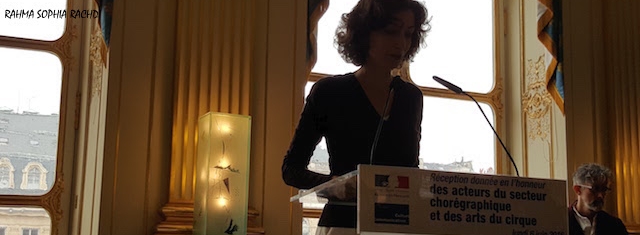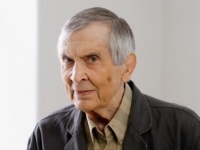Music
FRENCH MINISTER OF CULTURE AZOULAY GIVES TRUBUTE TO EINOJUHANI RAUTAVARAA
FINISH COMPOSER DIED ON JULY 27

Audrey Azoulay Minister of Culture (Source: Rahma Sophia Rachdi )
Einojuhani Rautavaara was a Finnish composer of classical music. He is amongst the most notable Finnish composers after Jean Sibelius and died on July 27th 2016. The French Minister Audrey Azoulay, sends condolences to his family and loved ones. “He was a charismatic teacher, he was the master of the great names of Finnish music today composers Magnus Lindberg and Esa-Pekka Salonen she declared.
Rautavaara wrote a great number of works spanning various styles. Having written early works using 12-tone serial techniques, his later music may be described as neo-romantic and mystical. His major works include Cantus Arcticus and Symphony No. 7 "Angel of Light".
Finnish composer in modern language, Einojuhani Rautavaara, Sibelius spotted by the master in the mid 50s, explored all styles, and instilled in his music a Nordic neo-romanticism that shines especially in his eight symphonies or operas. Explorer of sound and birdsong, like a Olivier Messiaen, he captured the essence tape to compose in 1972, the famous Cantus Arcticus, Concerto for Birds and Orchestra. He was a charismatic teacher, he was the master of the great names of Finnish music today composers Magnus Lindberg and Esa-Pekka Salonen.
Rautavaara was a prolific composer and wrote in a variety of forms and styles. His opus can be broadly divided into four periods: early " neoclassical" period of the 1950s, exhibiting close ties to tradition; avant-garde and constructivist stage of the 1960s, where he experimented with serial techniques, but abandoned them in the 1960s; "neo-romantic" period of the late 1960s and the 1970s; it gradually blended into an eclectic, "post-modern" compositional style where he blended a wide spectrum of stylistic techniques and genres.[5][6] A recurring label given to his opus is "mysticism", for his fascination with metaphysical and religious subjects and texts.[5][6][1] (Several of his works have titles which allude to angels.------------------
His compositions include eight symphonies, 14 concertos, choral works (several for unaccompanied choir, including Vigilia (1971““1972)), sonatas for various instruments, string quartets and other chamber music, and a number of biographical operas including Vincent (1986““1987, based on the life of Vincent van Gogh), Aleksis Kivi. He now rests in peace closer to his angels allusion in his compositions.
French Minister Of Culture Audrey Azoulay Musik Finland Composer Einojuhani Rautavaraa Rahma Sophia Rachdi
Liability for this article lies with the author, who also holds the copyright. Editorial content from USPA may be quoted on other websites as long as the quote comprises no more than 5% of the entire text, is marked as such and the source is named (via hyperlink).







